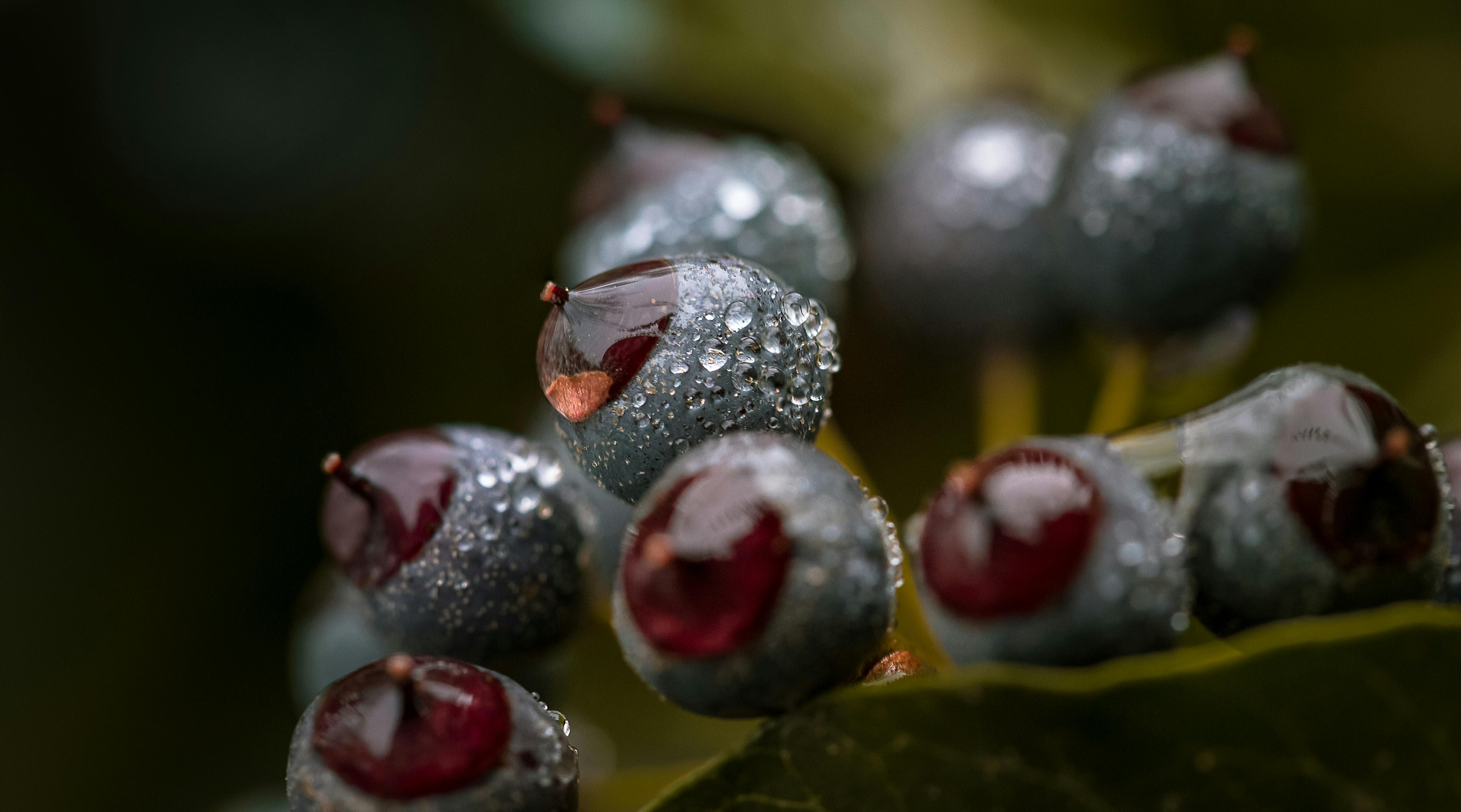Blueberry plants are a popular and delicious addition to gardens around the world. But in order for these plants to thrive, they require a specific amount of water. Knowing how much water blueberry plants need can help you maintain healthy and productive plants that yield delicious fruits. In this article, we will discuss the importance of watering blueberry plants and how much water is necessary for optimal growth.Blueberry plants need 1-2 inches of water per week in the form of rainfall or irrigation. It is important to ensure that the soil is consistently moist but not saturated. When watering blueberry plants, water at the base of the plant and avoid wetting the leaves and fruits to prevent diseases.
Factors That Affect Blueberry Plant Water Requirements
Water is essential for the growth and health of blueberry plants. Different factors, such as climate, soil type, and plant variety can affect how much water a blueberry plant needs. Understanding these factors can help ensure that your blueberry plants get the water they need to thrive.
Climate is one of the most important factors affecting water requirements for blueberry plants. In warm climates, blueberry plants will need more frequent watering than in cooler climates. This is because the warmer temperatures cause the soil to dry out more quickly, requiring more frequent watering to keep the plant hydrated. In cooler climates, less frequent watering might be necessary as the soil retains moisture better in cooler temperatures.
Soil type also plays a role in determining how much water a blueberry plant needs. Soils with good drainage are ideal for blueberry plants since they allow excess water to easily drain away from the roots of the plant. Soils that are slow-draining or hold onto moisture, such as clay soils, require less frequent watering so that root rot does not occur due to overly wet conditions.
The variety of blueberry plant you have also affects its water requirements. Some varieties are more drought-tolerant than others and require less frequent watering. Be sure to research your specific variety and follow any recommendations for irrigation needs that may come with it.
By understanding these different factors and how they affect your blueberry plant’s water needs, you can ensure that your plants stay healthy and productive. With proper irrigation and care, your blueberries should thrive no matter what climate or soil type you have.
Understanding the Soil Type for Blueberry Plants
Blueberry plants require acidic soil to grow and thrive. The pH of soil suitable for blueberries should be between 4.5 and 5.5, and they prefer a sandy loam soil with good drainage and plenty of organic matter. If your soil doesn’t match this ideal profile, you can still grow blueberries, but you’ll need to make some adjustments.
If your soil is too alkaline (above pH 7), you can add sulfur or other acidifying materials to lower the pH level. You can also add peat moss or compost to increase the organic content of clay soils, which will improve drainage as well as provide some acidity. If your soil is naturally low in phosphorous, add a little fertilizer with a high phosphorous content during planting time.
Blueberry plants also have fairly shallow root systems, so it’s important to keep weeds away from the area around the plants and avoid tilling too deeply when cultivating the soil. Mulch around blueberry bushes will help keep down weeds as well as provide nutrients and help maintain moisture levels in the soil.
When watering blueberries, be sure not to over-water them – waterlogged soils can lead to root rot and other diseases that kill off both young and mature plants. Water deeply when necessary instead of shallowly more often; this allows moisture to penetrate deep into the roots instead of sitting on top of the surface of the ground where it evaporates quickly or leads to fungus growth.
By understanding what type of soil is best for blueberries, you can create an environment that will promote healthy growth for many years!
Establishing a Schedule for Watering Blueberry Plants
Watering blueberry plants is an important part of caring for them. Establishing a regular watering schedule will help ensure plants remain healthy and productive. In general, blueberry plants need to be watered on a regular basis during the growing season, usually every 7-10 days. It is also important to water the plants deeply so that the roots can absorb enough moisture. The amount of water needed will depend on factors such as soil type and climate.
When establishing a watering schedule, it is also important to consider the weather conditions in your area. If there has been a period of hot or dry weather, then the plants may need more frequent watering in order to remain healthy and productive. On the other hand, if there has been a lot of rain then you may be able to reduce the frequency of watering.
When watering blueberry plants it is important to use water that is at room temperature or slightly warmer. Cold water can shock the roots and cause them stress which can lead to poor growth and yield. Ideally, you should use rainwater or filtered water if possible as tap water may contain chemicals that can be harmful to your plants.
Finally, it is important to monitor your blueberry plants regularly and adjust your watering schedule as necessary depending on how they are doing. If you notice that the leaves are wilting or turning yellow then this could be an indication that they are not receiving enough water and you should increase the frequency or amount of watering accordingly.
Basic Guidelines for Watering Blueberry Plants
Watering blueberry plants correctly is essential to ensure healthy growth and abundant fruit production. To achieve optimal water levels, blueberries need an average of 1-2 inches of water per week. This can be achieved through a combination of rainfall and supplemental irrigation. Irrigation should be applied more frequently during periods of drought or heat stress, with an additional 1-2 inches of water per week provided. Soaker hoses or drip irrigation can be used to reduce runoff and conserve water. The soil around the plants should remain moist but not soggy, as this can lead to root rot and other plant diseases. Additionally, mulch should be applied at least 2-3 inches deep around the plants to help retain moisture in the soil. These basic guidelines will ensure that your blueberry plants receive the necessary amount of water for optimal growth and fruit production.

How Often to Water Blueberry Plants
Watering blueberry plants is an important step in ensuring that they grow well and produce abundant berries. The amount of water needed will depend on the soil type, weather conditions, and the age of the plant. Generally, blueberry plants need to be watered on a regular basis, with about 1-2 inches of water per week during the growing season. In areas with hot summers or low rainfall, it may be necessary to water more often. During periods of prolonged drought, it is important to make sure that blueberry plants get enough water so that they are not stressed by dry conditions. It is also important to avoid over-watering as this can lead to root rot and other problems. Mulching around the base of the plant can also help conserve moisture in the soil and reduce the need for frequent watering.
Irrigation Systems for Blueberry Plants
Having an irrigation system in place for your blueberry plants is essential to ensure their success. An effective irrigation system can help you maintain the ideal amount of moisture in the soil, preventing potential issues such as root rot or nutrient deficiencies. There are several different types of irrigation systems that can be used on blueberry plants, including overhead sprinklers, drip irrigation, and furrow irrigation.
Overhead sprinklers are a popular choice for irrigating blueberries because they can cover a large area quickly and efficiently. However, they do require frequent adjustment to keep water from pooling in certain areas of the garden. Drip irrigation is another option that can be used to slowly and evenly apply water directly to the roots of your plants. This method is more time-consuming than overhead sprinklers but is often more efficient at delivering water directly where it’s needed most.
Furrow irrigation is another option that can be used on blueberry plants. This method involves creating shallow trenches between rows of plants and then filling them with water from a hose or other source. This allows for a more even distribution of water and helps prevent runoff. However, furrow irrigation does require manual labor to create the trenches and fill them with water each time they need irrigating.
When choosing an irrigation system for your blueberry plants, it’s important to consider factors such as cost, efficiency, and maintenance requirements before making a decision. Each type of system has its own advantages and disadvantages so it’s important to research each one carefully before investing in any new equipment or materials. With proper care and maintenance, an effective irrigation system can help keep your blueberries healthy and productive for years to come.
Signs of Overwatering in Blueberry Plants
Signs of overwatering in blueberry plants include wilting, yellowing, and dropping leaves; discolored, soft, and moldy fruit; and root rot. Wilting can be a sign of root damage due to too much water. Yellow or droopy leaves can indicate too much water has been given to the plant, preventing oxygen from getting to the roots. Soft or moldy fruit is a sign that the plants are not able to take up the necessary nutrients due to over-saturation of water. Root rot is a serious problem that can occur when there is too much water in the soil. If it is not treated quickly, it can cause death of the plant.
Signs of Underwatering in Blueberry Plants
Signs of underwatering in blueberry plants include dry leaves, leaf drop, and stunted growth. Leaves will become dry if there isn’t enough water available for the plant to take up. Leaf drop can happen when there isn’t enough moisture in the soil for the plant to absorb through its roots. Stunted growth occurs when there isn’t enough water for the plant to grow properly and reach its full potential. The leaves may also become pale or yellow if they are not receiving enough moisture. Underwatering can also lead to poor flowering and reduced yields of fruit.

Conclusion
Blueberry plants require a lot of water, but the amount of water will vary based on the individual plant’s needs. Blueberry plants typically require 1-2 inches of water per week during the growing season and should be watered deeply. Water stress can cause a decrease in yield, so it is important to ensure that blueberries are not subjected to drought conditions. To determine if your blueberry plant needs watering, check the soil moisture level before watering and avoid watering if the soil is already moist. By providing your blueberry plants with the right amount of water, you can ensure that they stay healthy and productive throughout the growing season.
In conclusion, blueberry plants require a lot of water to stay healthy and productive. It is important to determine how much water each individual plant needs by checking the soil moisture level before watering. By following these guidelines, you can ensure that your blueberry plants stay hydrated and healthy throughout their growing season.

